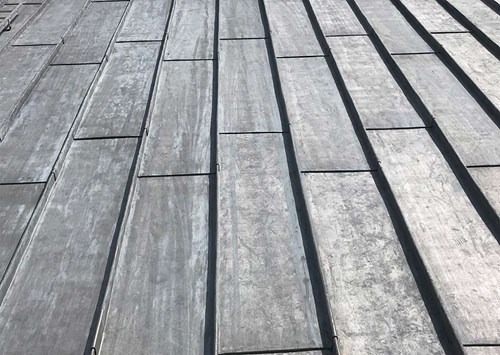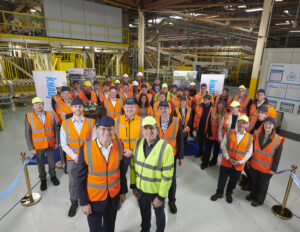Martin Armour, Commercial Director at Calder Industrial Materials Ltd, makes the case for responsible and safe use of lead as an environmentally sustainable construction material.

The widespread use and adoption of lead in the construction industry for roofing and cladding is potentially under threat from its inclusion on the list for European regulation under REACH (Registration, Evaluation, Authorisation and Restriction of Chemicals). REACH addresses the production and use of chemical substances, and their potential impact on human health and the environment.
However, with proper management controls and health and safety practices, employers, contractors and the industry as a whole can successfully mitigate risks.
Lead is a naturally occurring base element designated by the chemical symbol (Pb) and has been used since Roman times in construction, especially in plumbing and roofing applications. Use of lead sheet continues and is widespread today for flashing and cladding for new build, replacement, modernisation and heritage construction applications.
Lead is a malleable, soft, weldable material and when produced in rolled sheet form can be easily formed and fabricated for the protection of roofs, surface water displacement and decorative work, particularly suitable for heritage buildings.
Its naturally heavy characteristics allow lead to remain in place during extreme weather conditions and provides superior natural protection against corrosion compared to other materials when used with patination oils. This allows manufacturers such as Calder Lead to offer a 50-year guarantee on lead installations. Of course, lead is also a 100 per cent recyclable material which is environmentally beneficial – compared to non-lead alternatives that typically fail earlier and are disposed of in landfill.
What’s the issue with lead?
The UK Health & Safety Executive publishes useful information regarding the potentially harmful effects of high levels of exposure to lead and lead alloys. In many cases, this advice relates to heavy processing and, in some cases, legacy industries where lead has been used historically in paint and other materials, and construction workers may be exposed during disposal and renovation.
The good news is that while very high levels of exposure can cause significant long-term health problems, in reality for construction workers, the absorption of lead is easily prevented, and where effective risk management is deployed, can be eliminated or substantially reduced. Lead can only be absorbed by inhalation, such as breathing in dust and fumes, or by ingestion caused by eating or passing lead traces from hand to mouth.
Safe working levels
By deploying adequate personal protective equipment (PPE) and also effective hygiene routines, construction workers exposure to lead can be managed and reduced to very safe working levels.
The Control of Lead at Work Regulations 2002 (CLAW) place a duty on employers to prevent, or where this is not reasonably practicable, to control employee exposure to lead and currently stipulates prescribed limits of lead in blood. The inclusion of lead on the candidacy list for EU REACH regulations is likely to mean within the next few years that employers will be forced to ensure that employees and contractors exposed to and working with lead on a regular basis will face much lower occupational exposure limits (OEL) for lead in blood.
What are the alternatives?
There are a variety of non-lead alternatives on the market, some of which claim to be constructed in part from recycled materials and intrinsically safe when compared to lead.
In reality, the published guarantees for lifetime are significantly shorter than rolled lead sheet material. These alternatives are made from unsustainable petrochemical-based materials that after replacement are unlikely to be recycled and could potentially end up being disposed of in landfill sites.
Lower costs are often a significant factor driving the adoption of lead alternatives where longevity and quality of build is of secondary importance, with no real consideration of the environmental impacts of throw-away flashing and roofing materials that are economically unviable to recycle compared to lead.
The facts and fiction about lead
The vast majority of lead sold in the UK market is manufactured domestically by high quality companies, such as Calder Lead, using entirely recycled lead material from the UK. This is one of the biggest green credentials for the use of lead, particularly compared to shorter-life plastic alternatives. It is very rare that lead goes into landfill due to the UK’s established recycling market and therefore poses almost no risk of ground and water table contamination. Re-cycled Lead is chemically refined to be almost pure and so maintains the same performance characteristics as when new.
Calder Lead maintains a 50-year warranty for the installed life of lead, which is in some cases more than 2.5 times the lifetime of cheap, plastic lead replacement flashings. Combined with an A/A+ BRE green guide rating, lead provides one of the most economic and durable materials of the circular economy.
In addition to its chemically pure nature and high levels of conformity, Calder Lead is produced to an exacting BS EN 12588 standard recognised as the industry accepted standard for high quality rolled lead sheet in roofing applications. All Calder Lead is made from recycled Lead in accordance with EC No 231-100-4/CAS No 7439-92-1.



